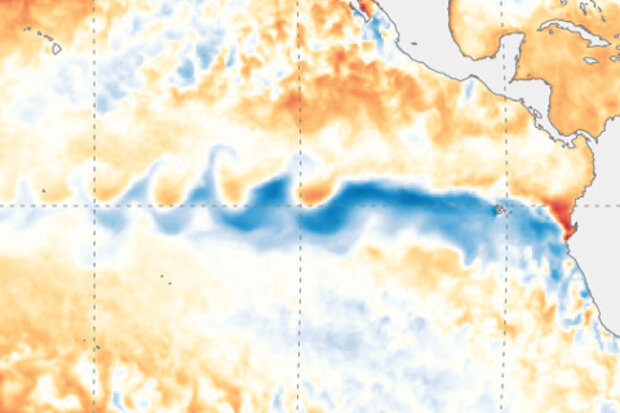Blogs
After so many months cooped up inside trying to flatten the COVID-19 curve, many of us are ready for the great outdoors. Patio furniture is flying off store shelves, gardens are springing to life, and outdoor BBQs are becoming the socially distant events of the season. But as we look to the outdoors in our quest for a bit of normalcy, it is important to remember that basking in the sunshine comes with its own health risks from the Sun’s ultraviolet (UV) radiation. Oh great, something else to worry about. But before you decide it’s safer to permanently relocate under your bed, avoiding the harmful UV effects is relatively easy. All we need is a little understanding of UV radiation, a forecast…
Read article
ENSO is still in neutral, and likely to continue so through the summer. However, the 50-55% chance of La Niña developing in the fall and lasting through winter means NOAA has hoisted a La Niña Watch.
What’s a Watch?
I’ve been writing these blog posts for more than six years now, and the terminology La Niña Watch still makes me picture someone peering out their window, binoculars trained on the horizon, waiting for La Niña to pop up. That wouldn’t be a great use of your time, though, as a Watch means the forecast favors the development of La Niña conditions within the next six months. (Also, of course, La Niña—just like El Niño—is a seasonal ocean/atmosphere pattern that develops in the…
Read article
It may seem like I randomly spun a Climate/Earth Phenomena wheel, landed on volcanoes, landed on ENSO, and then decided to do a piece connecting the two. But it makes more sense than it may seem. Volcanic eruptions have had HUGE impacts on the global climate by cooling Earth (1). It’s only natural to wonder, if the planet is affected by volcanic eruptions, can ENSO be? (Full disclosure: As with many things climate related, the answer to this question will be like the final episode of Lost; likely to leave you unsatisfied, maybe even a bit angry, yet wanting more.
Do volcanoes affect ENSO, and why should we care?
Why care? We can learn a lot about how much we know something when tha…
Read article
After several months of hovering above average, sea surface temperatures in the tropical Pacific have dropped rapidly in recent weeks. The current CPC/IRI ENSO forecast estimates about a 60% chance that ENSO-neutral conditions will remain through the summer. Chances for the fall and winter are about equally split between neutral continuing and La Niña developing, at around 45% each. El Niño isn’t completely ruled out, but it is less likely, with a chance of about 10%.
June finds us starting to emerge from the spring predictability barrier, when computer models are less successful at predicting how ENSO will behave. However, the models and nature aren’t showing strong signs, which is refle…
Read article
Although the tropical Pacific usually takes center stage here at the ENSO Blog, we can’t help but take a peek at the tropical Atlantic now, with Tropical Storms Arthur and Bertha giving an early start to an Atlantic hurricane season that NOAA recently predicted to be an active one. Given this, it’s a good time to give a brief rundown of some of the latest and greatest advances in seasonal tropical cyclone prediction research from the NOAA lab in which I work, the Geophysical Fluid Dynamics Laboratory (GFDL). Because I am not a tropical cyclone expert, my colleague and tropical cyclone prediction guru Dr. Hiroyuki Murakami has kindly offered his assistance with this post. Without further dela…
Read article




